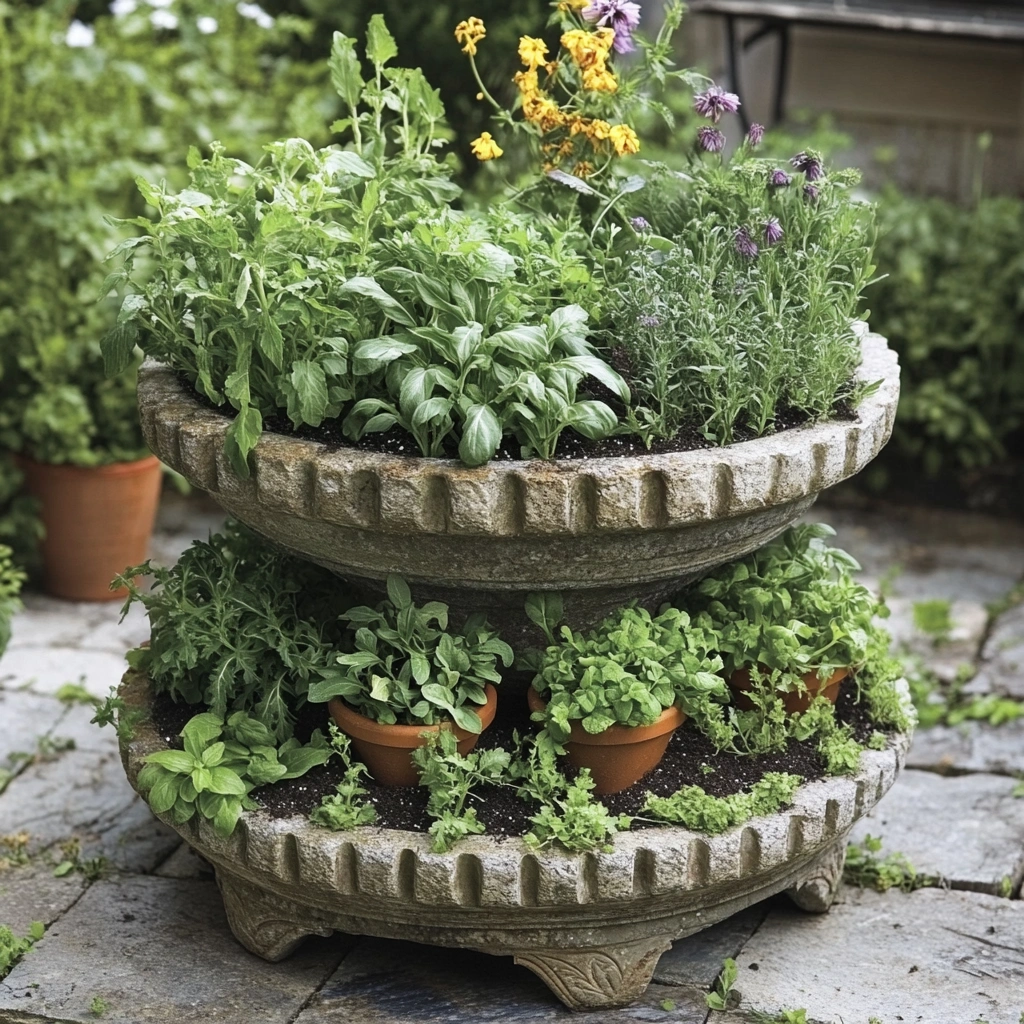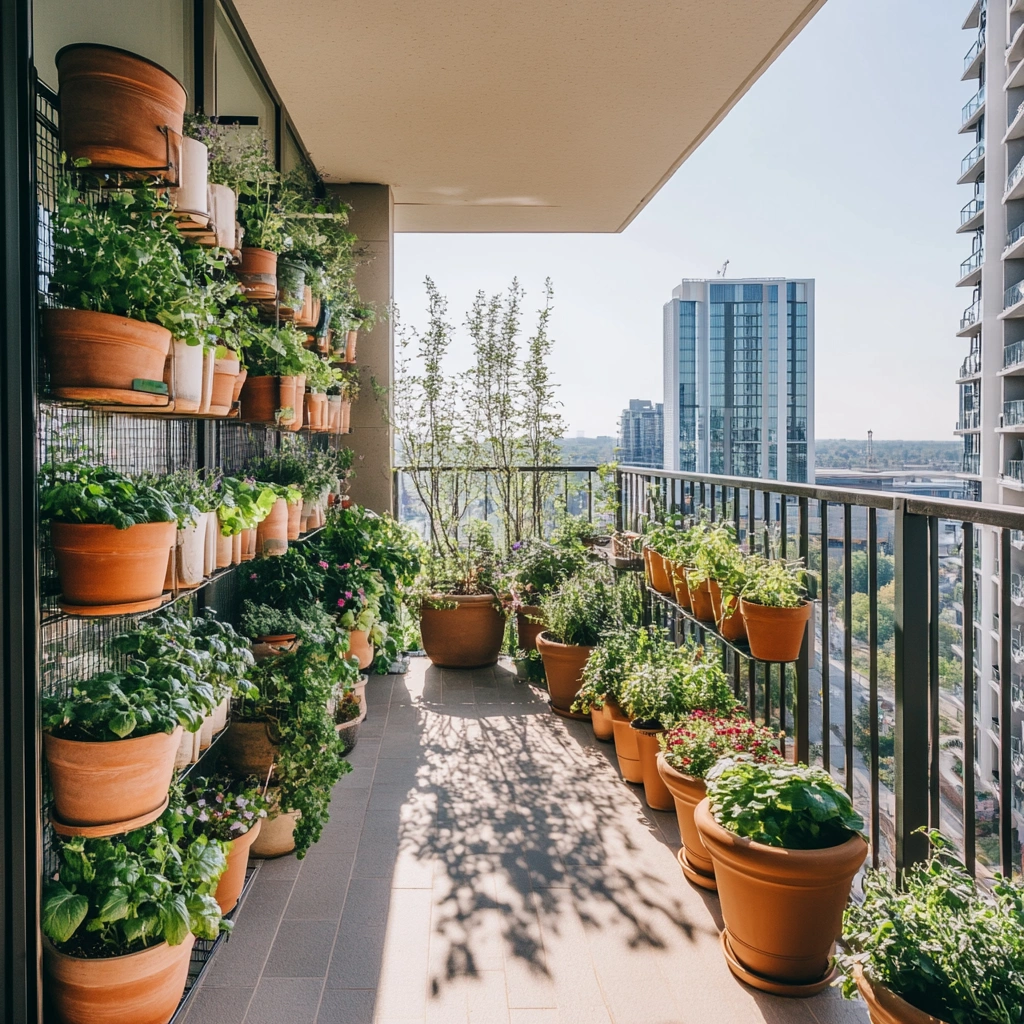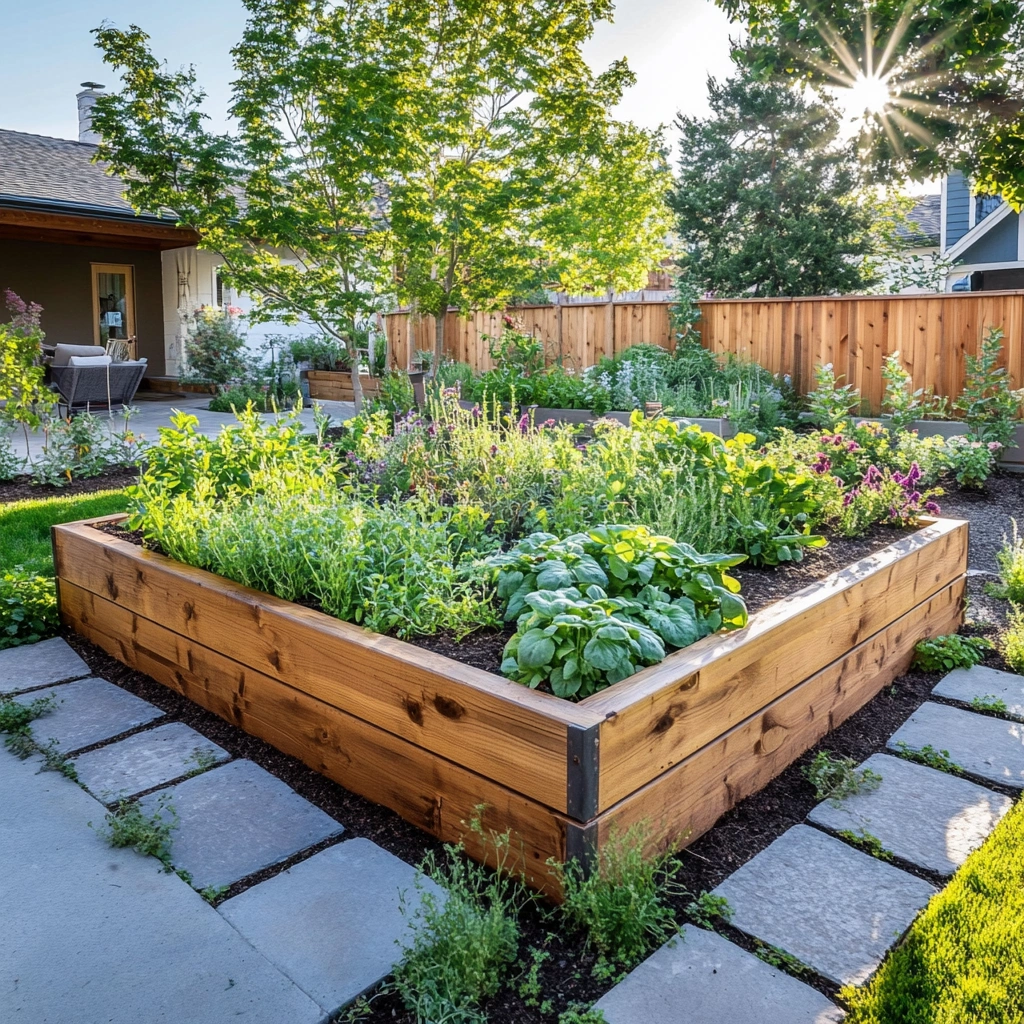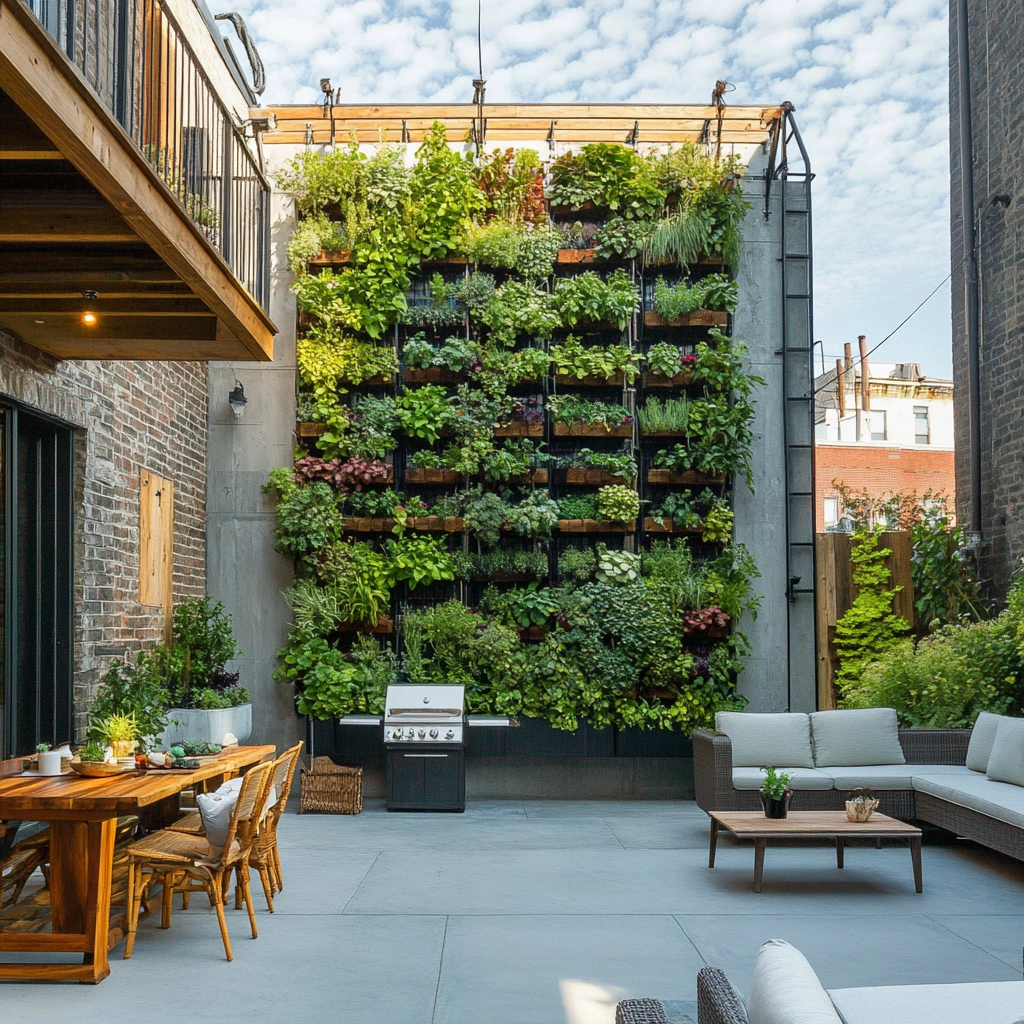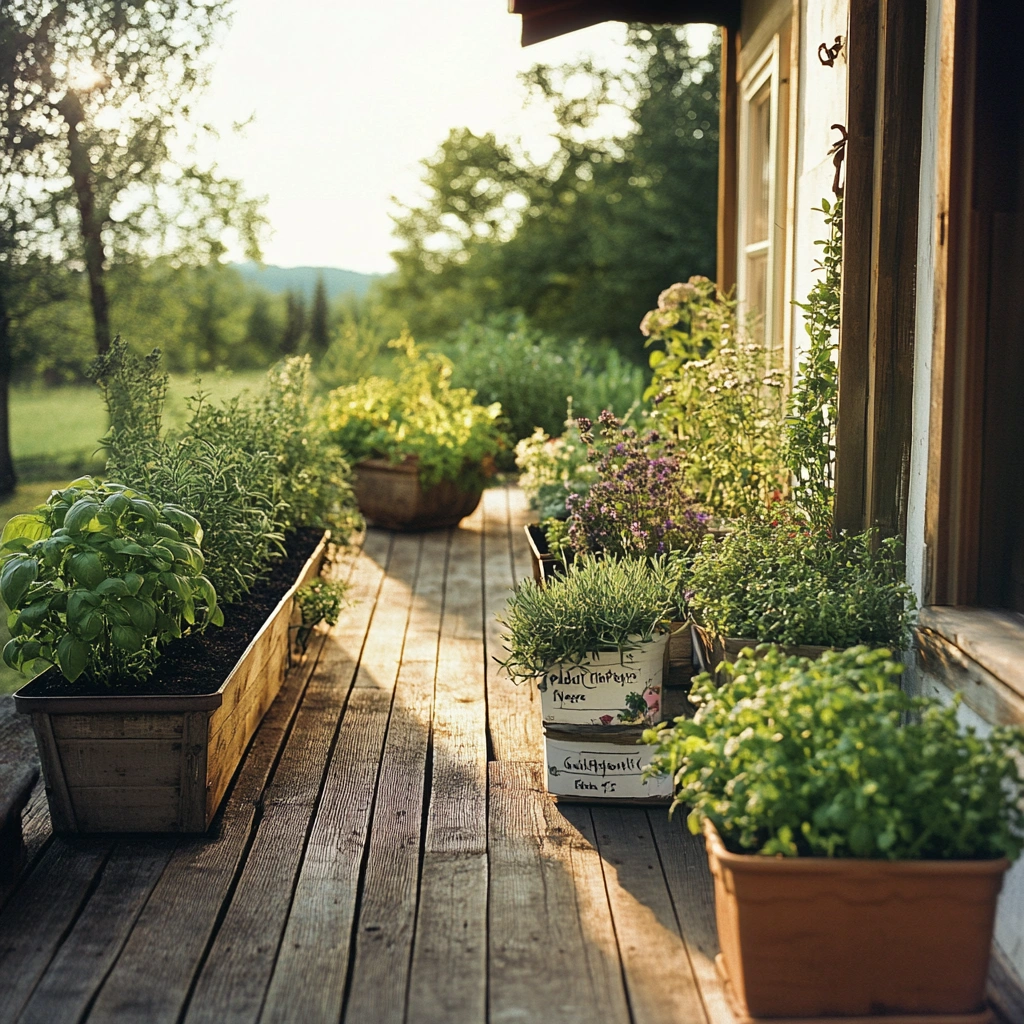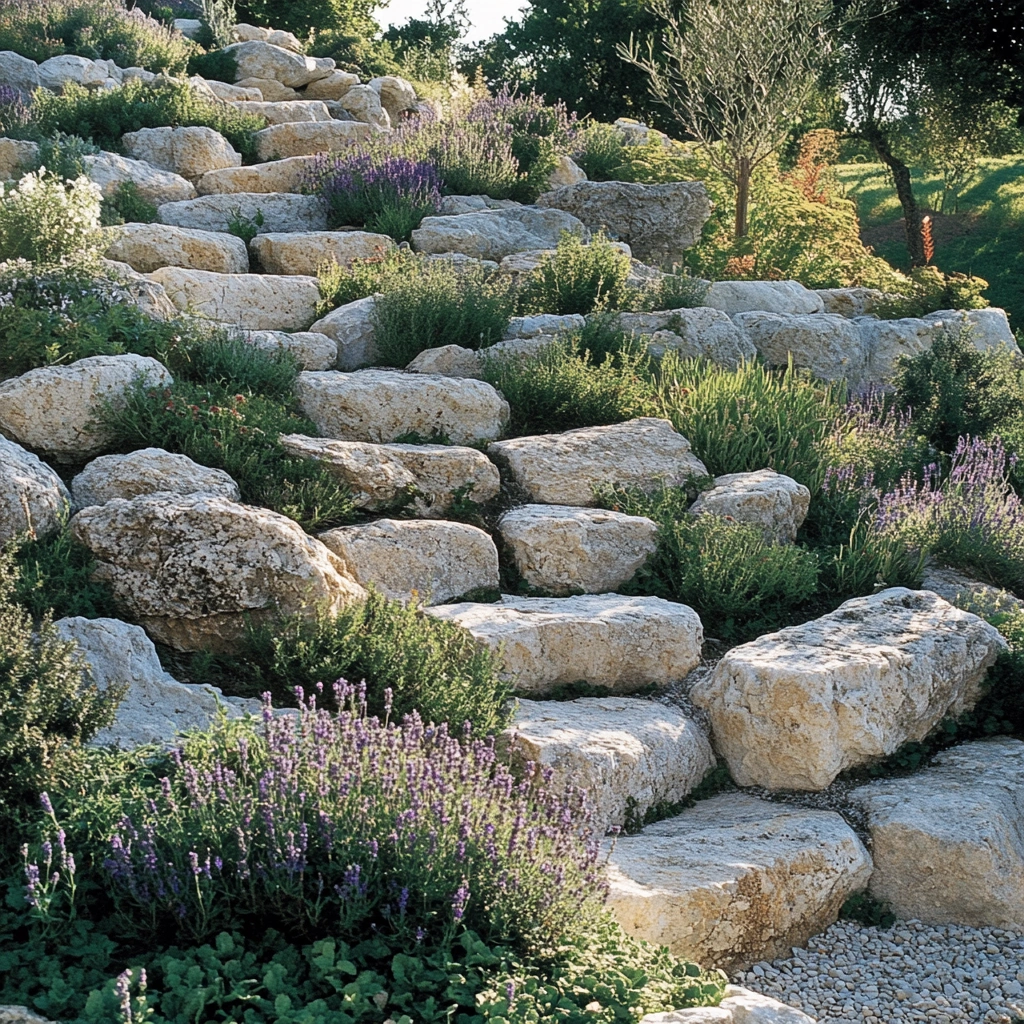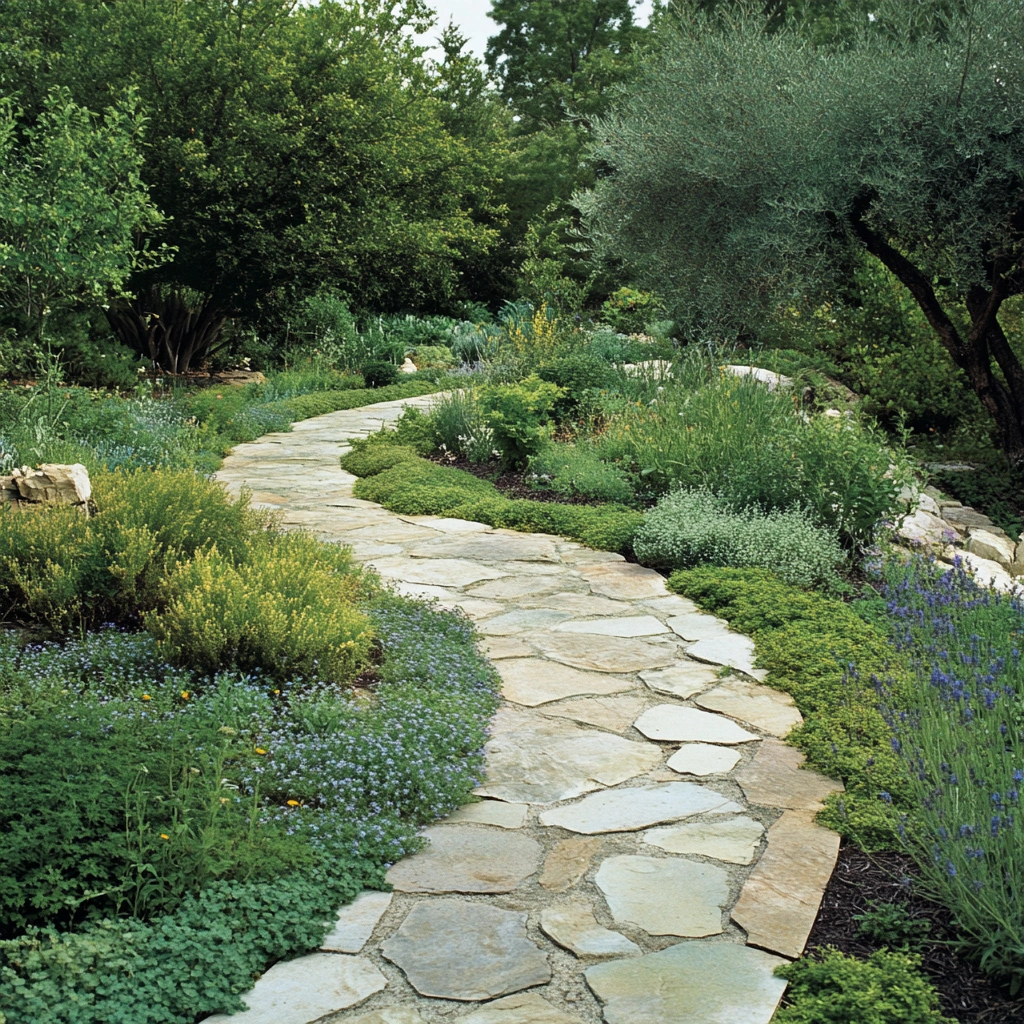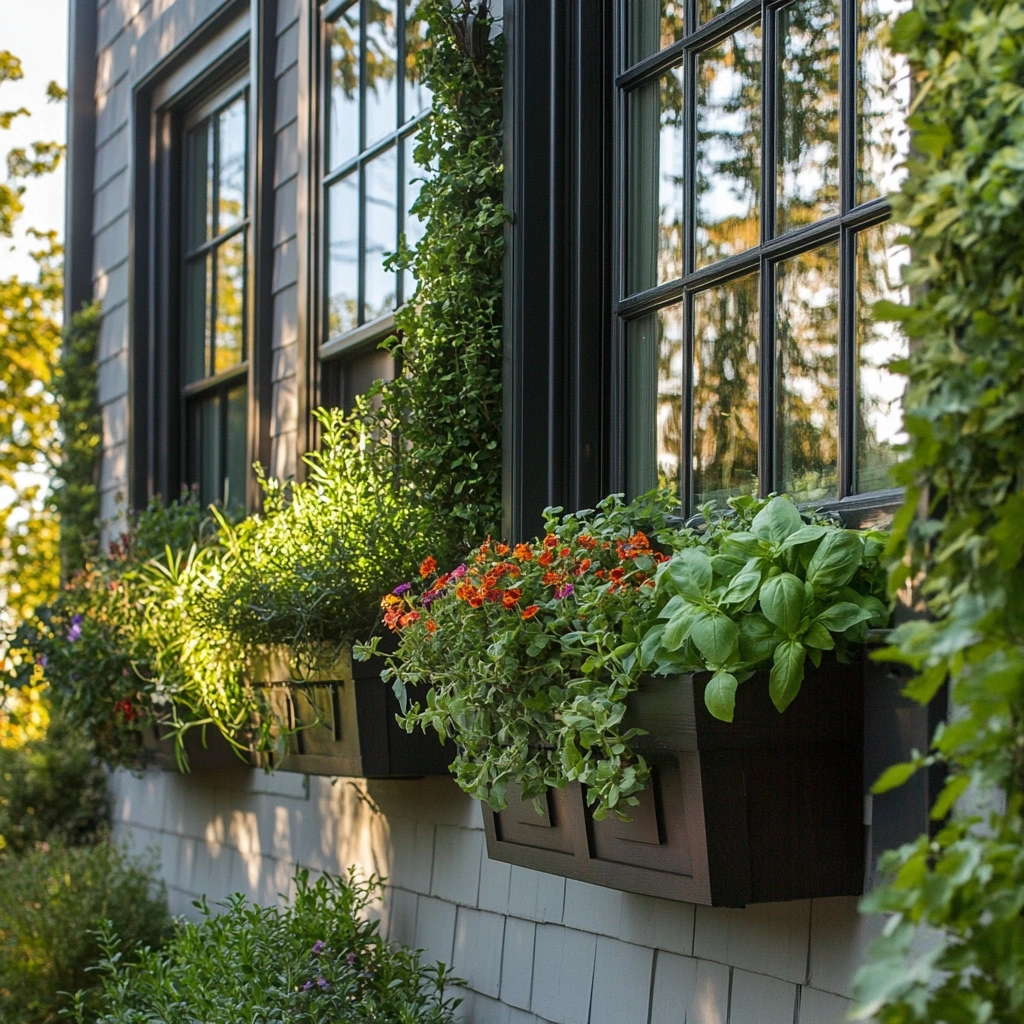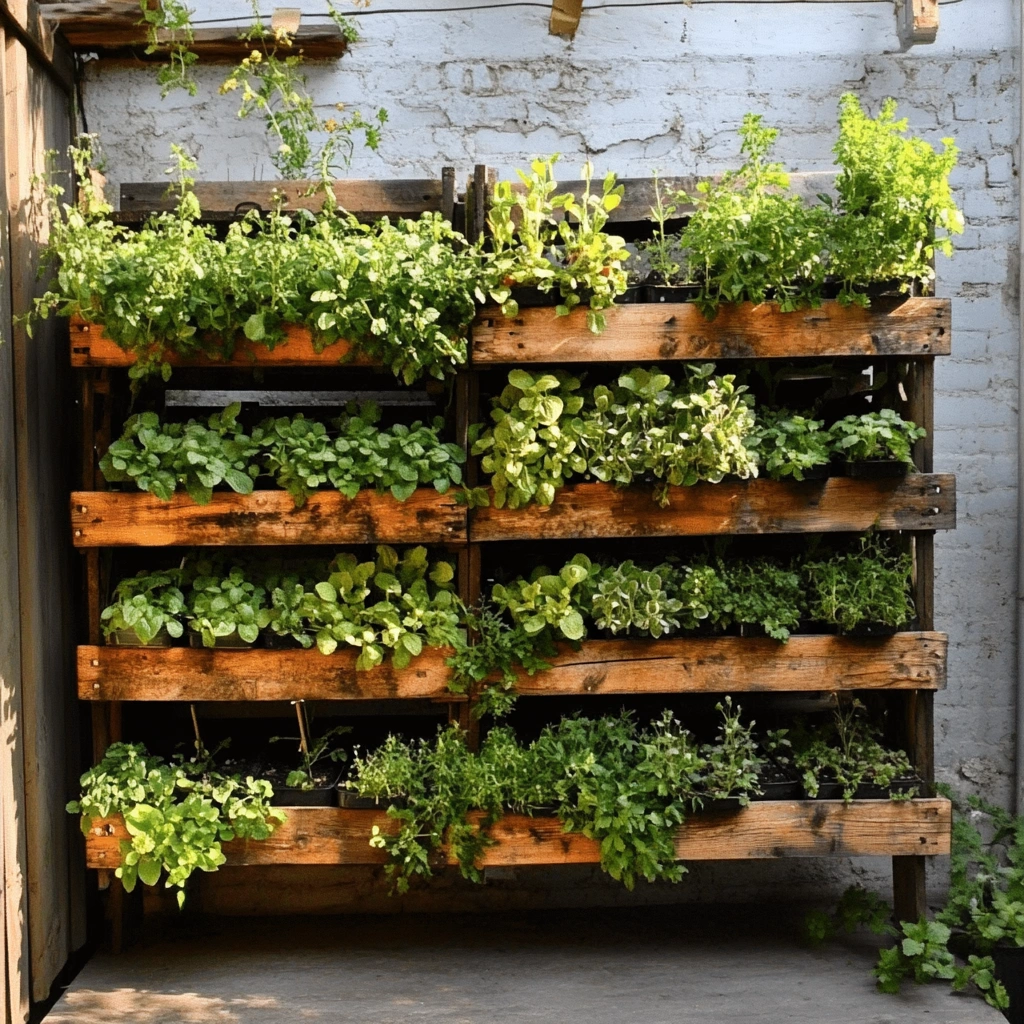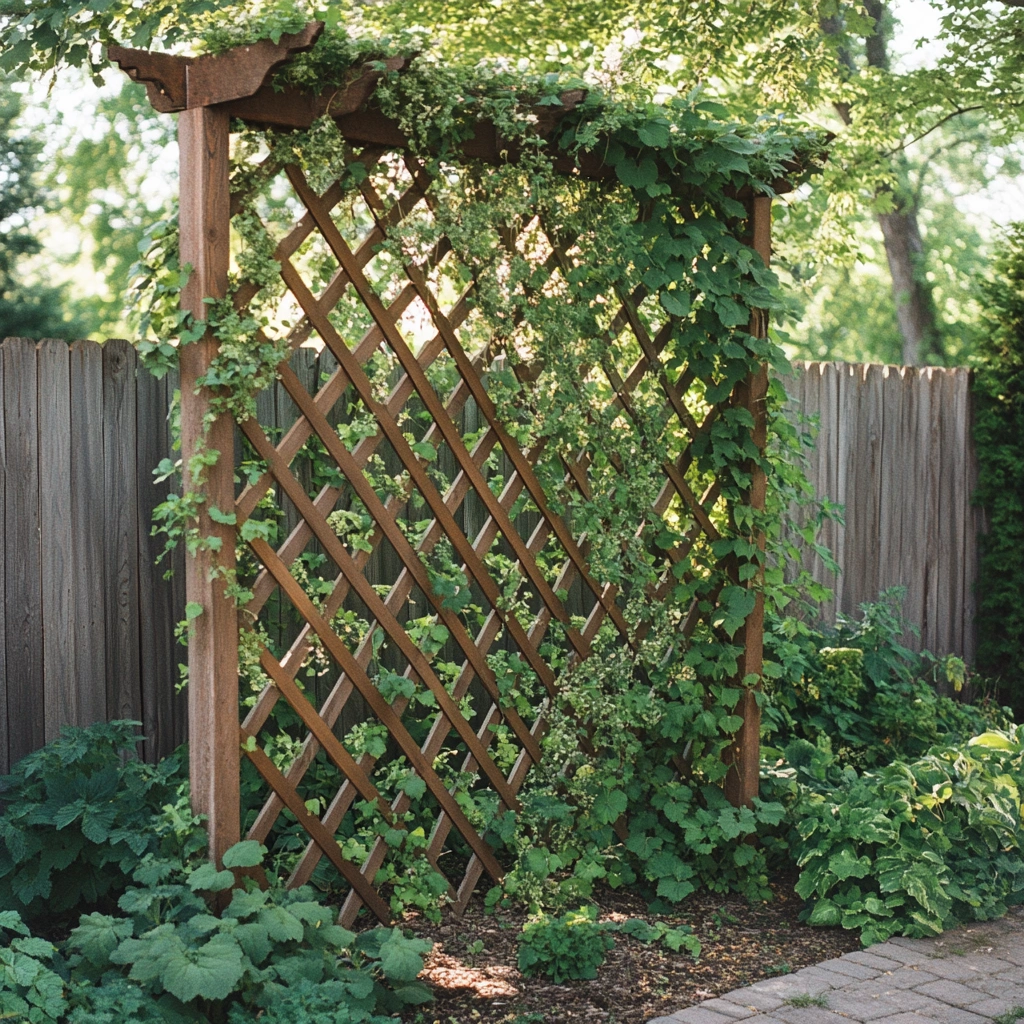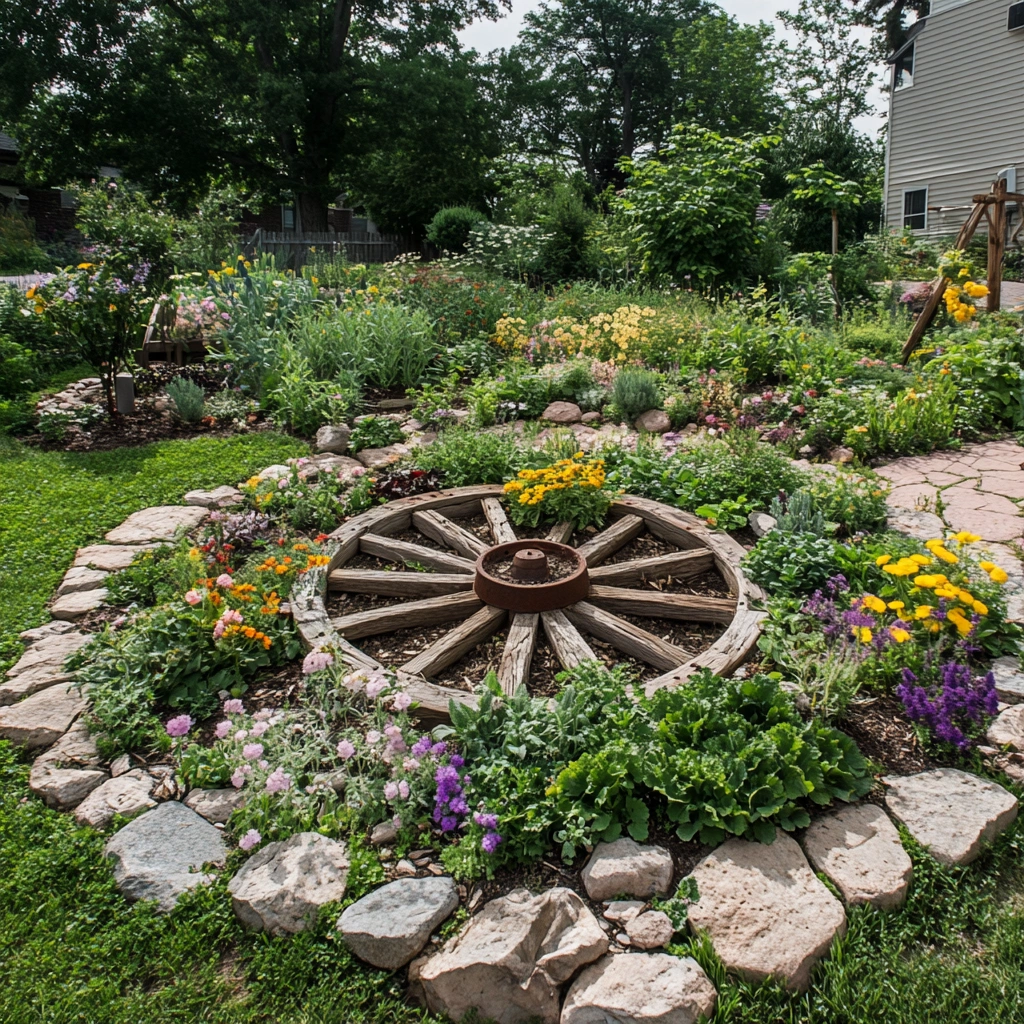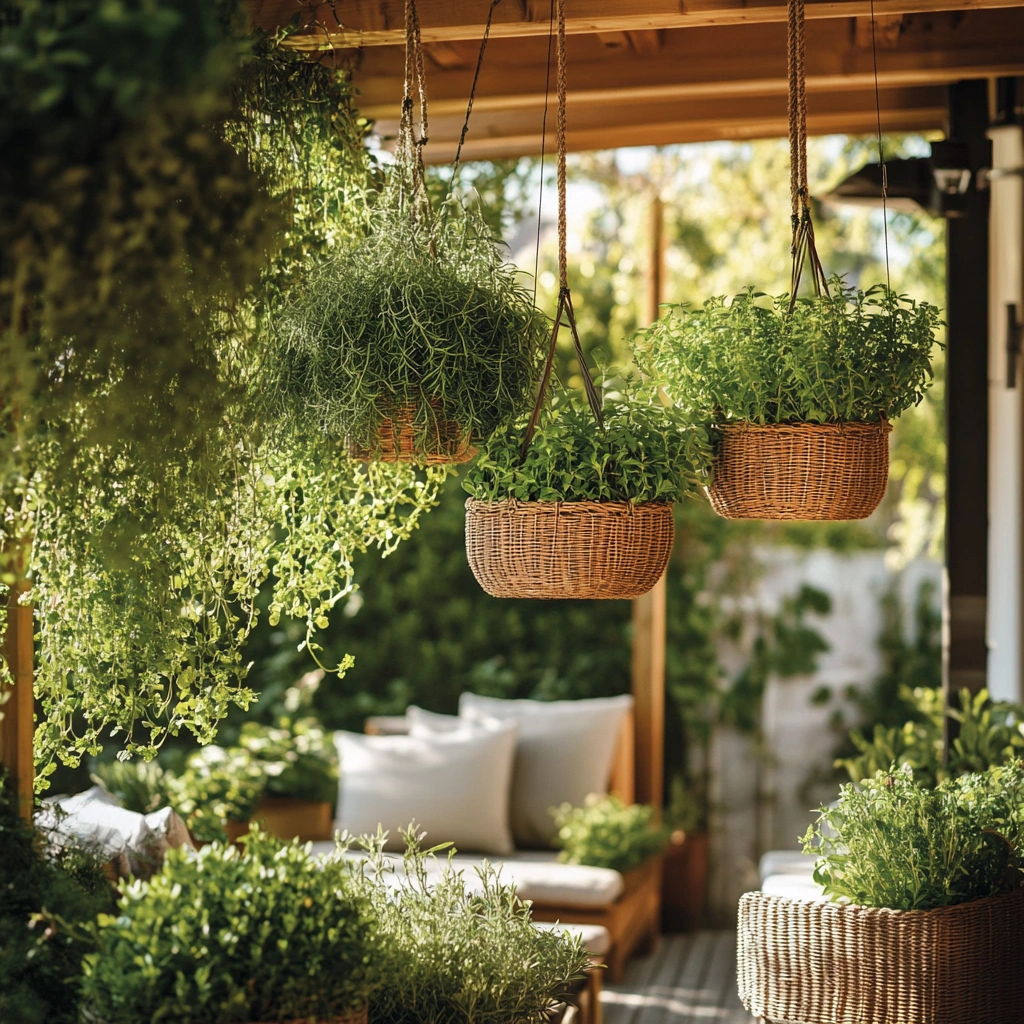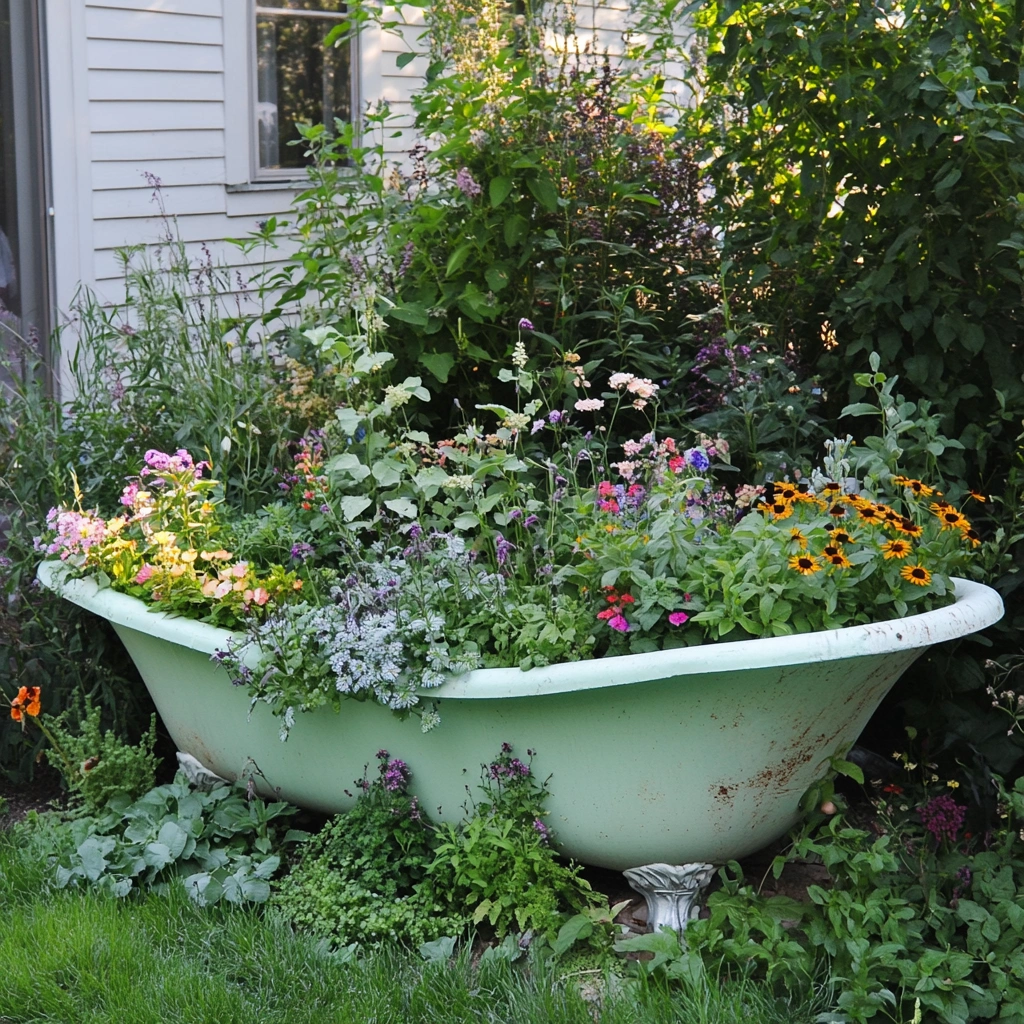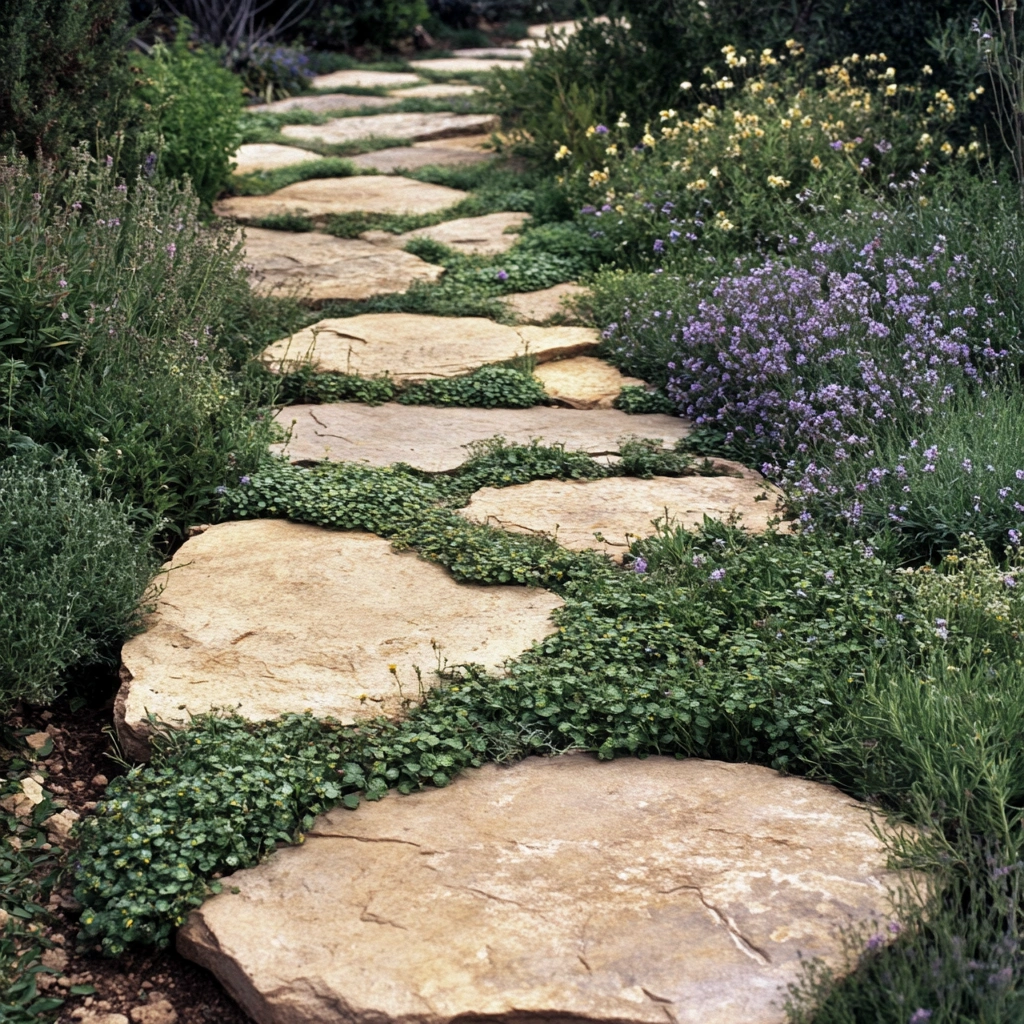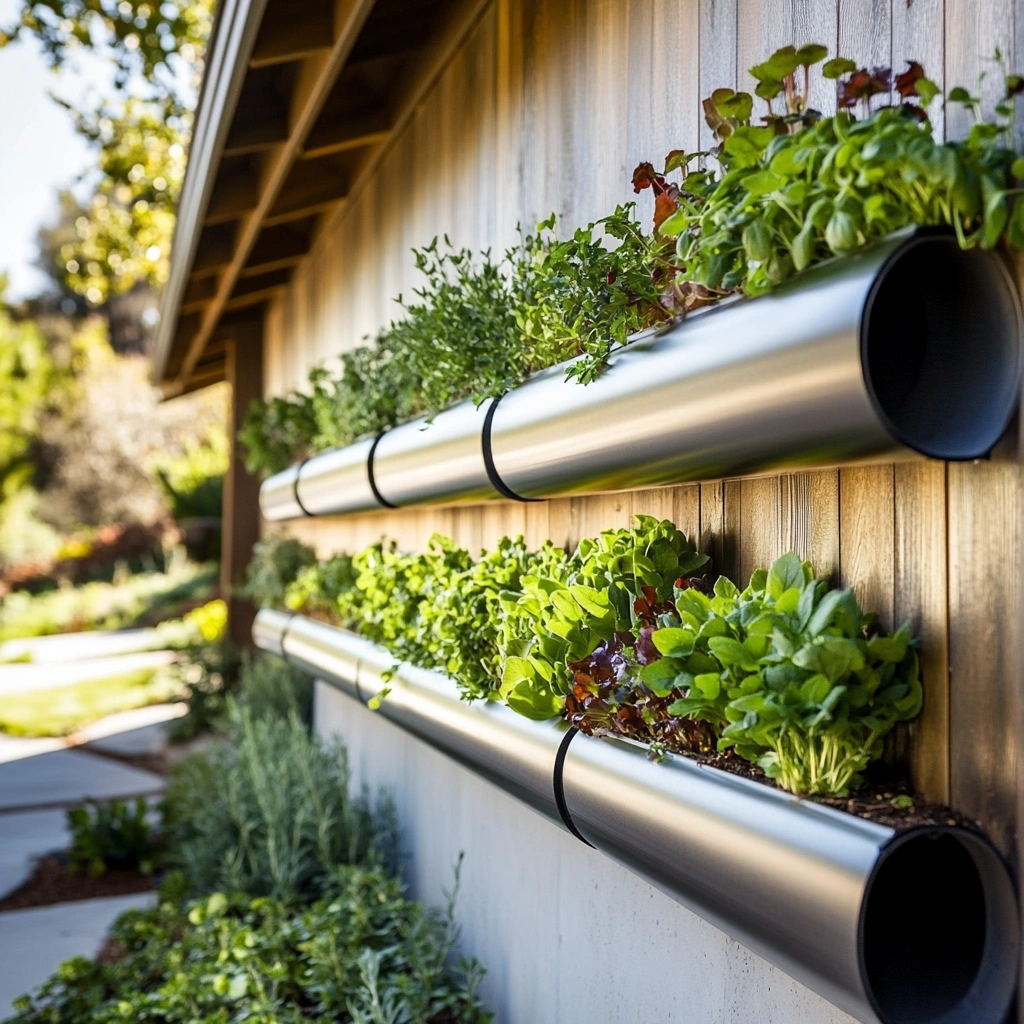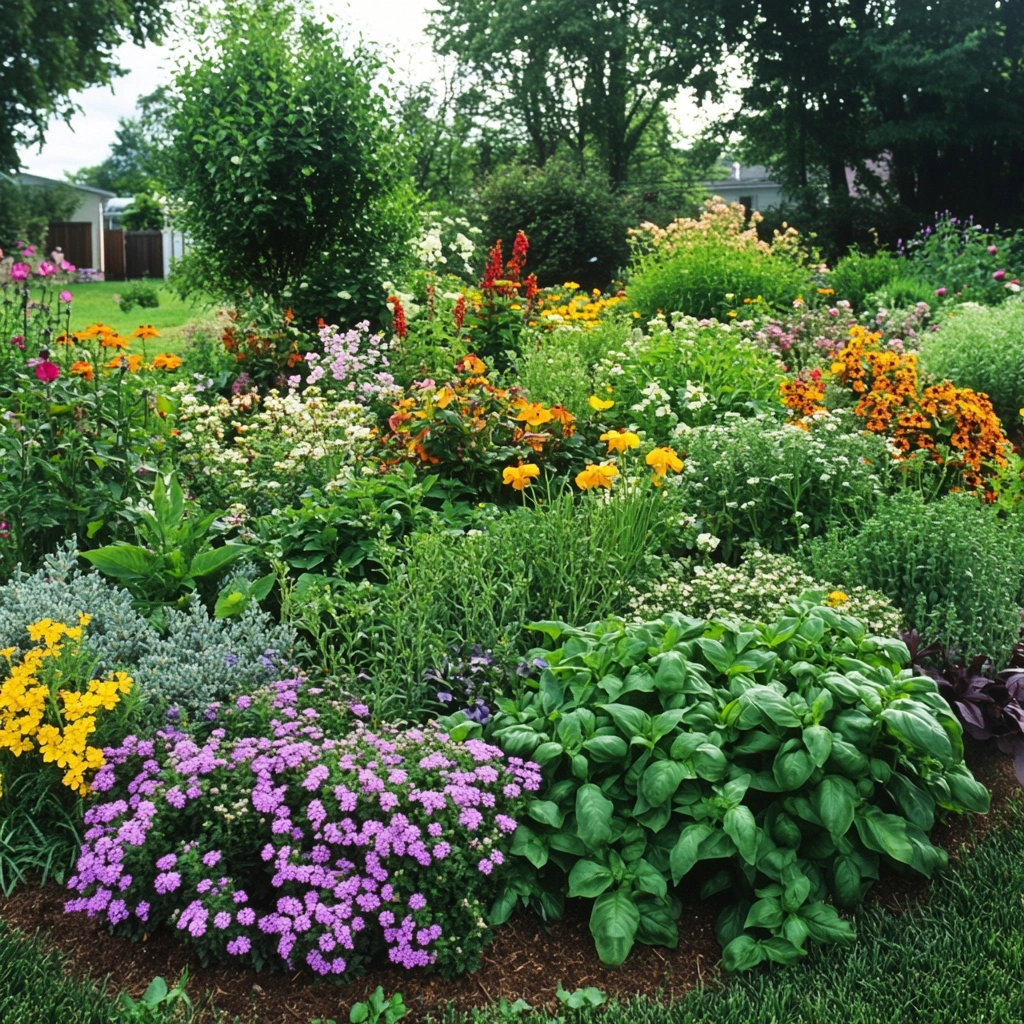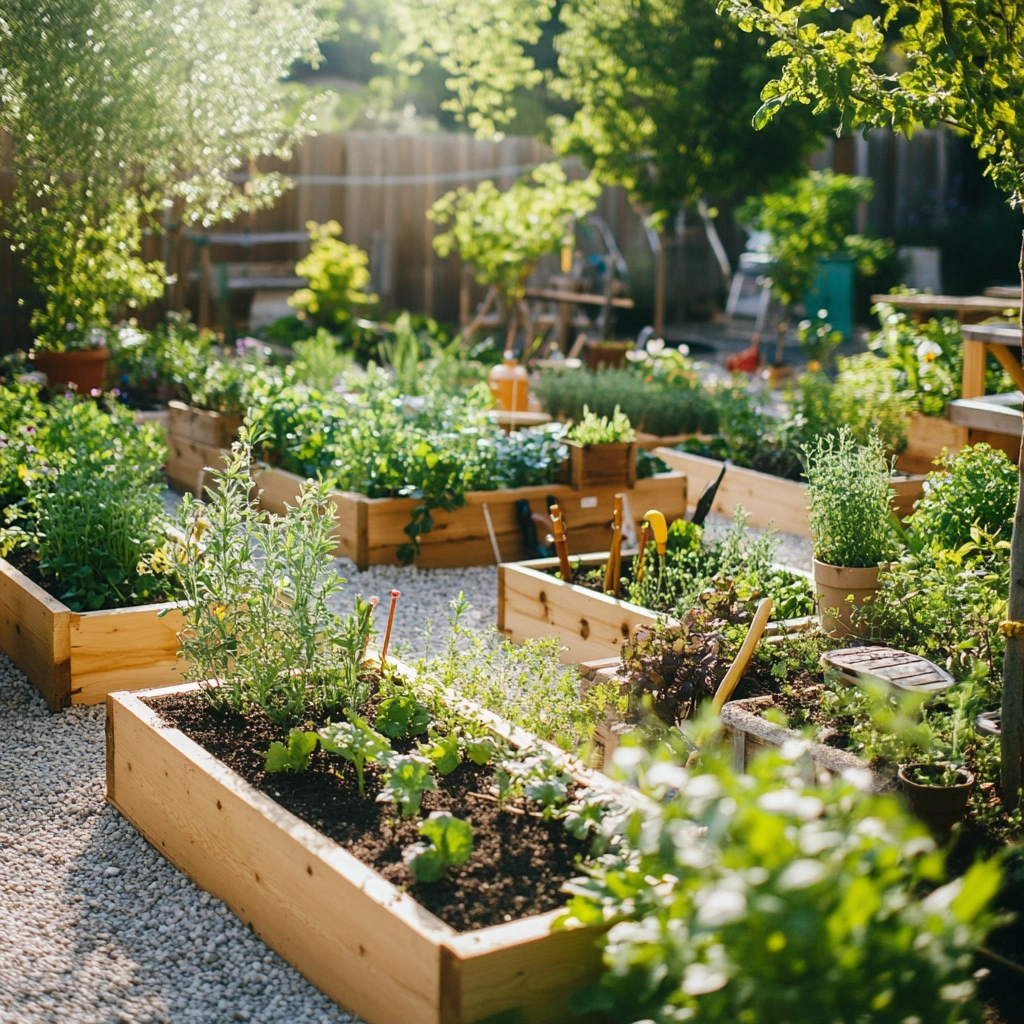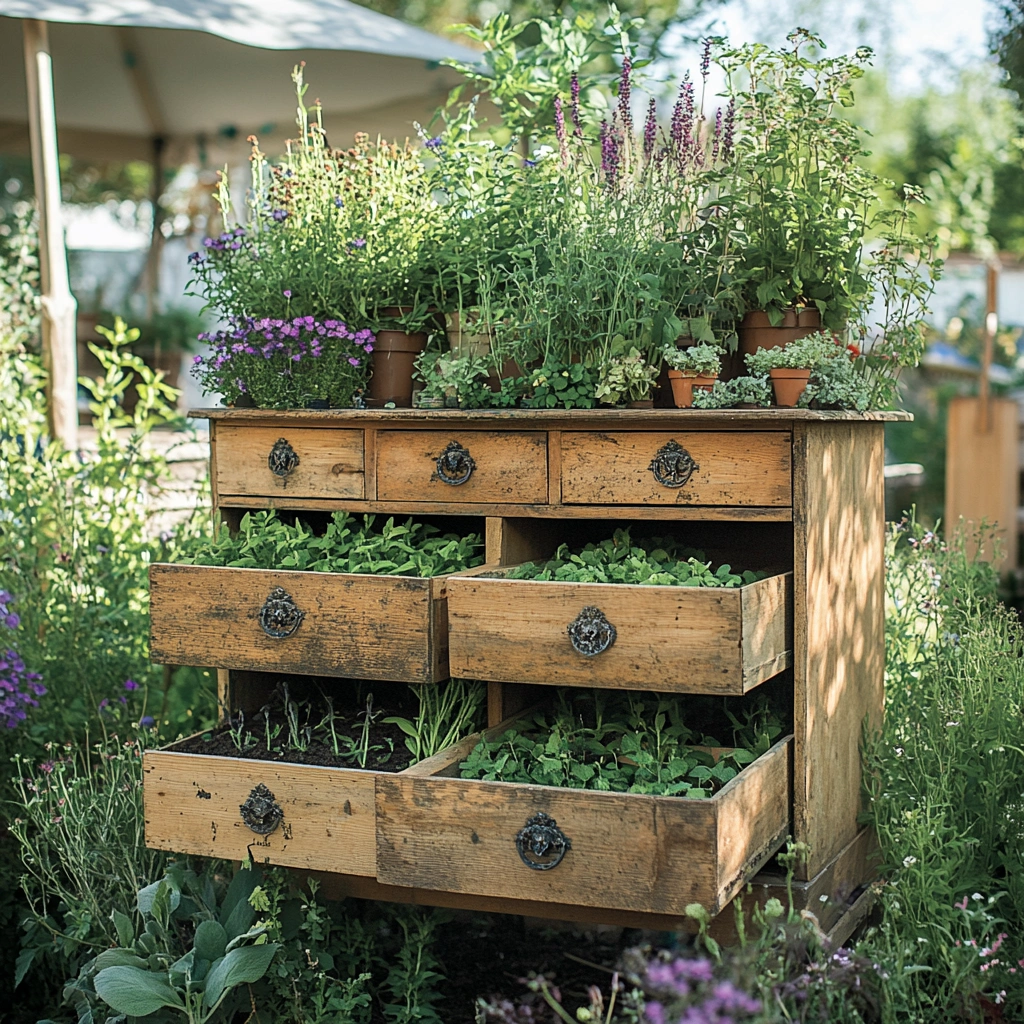Hey there, garden enthusiast! Ever dreamt of stepping out your back door and snipping fresh basil for your pasta, plucking mint for your evening tea, or gathering lavender for a soothing sachet? Sounds pretty dreamy, right? Well, good news: making that dream a reality is doable, no matter how much (or how little) space you’re working with.
Herb gardens aren’t just about upping your culinary game; they also sprinkle a little magic, aroma, and tranquility into your backyard, patio, or even your tiny balcony. So, grab a coffee (or maybe a homemade mint lemonade?), because we’re diving into inspiring and practical ideas to help you whip up your very own outdoor herb oasis.
The Charm of a Container Herb Garden
The Inspiration: You stare at your tiny balcony, longing for a garden, but a traditional plot seems like a pipe dream. You want fresh herbs without buying a whole farm. You wonder, “How can I get green without the grand scale?”
Why it works: Containers are the ultimate space-savers, perfect for balconies, patios, or even those sunny windowsills. You can have fresh herbs at your fingertips, even if your “yard” is just a few square feet of concrete. Plus, they’re the chameleons of the garden world.
Pro Tip: Choose terra cotta pots; they allow the soil to breathe better than plastic, which herbs adore.
Raised Bed Herb Gardens: Elevated Elegance
The Inspiration: Your back aches just thinking about bending over to weed, and your soil, frankly, is a hot mess of clay and rocks. You crave a garden that’s easier on your body and your plants.
Why it works: Raised beds are like having a personal concierge for your herbs. They offer superior drainage, meaning no soggy roots (herbs hate soggy roots, trust me). You also get to play mad scientist with your soil, concocting the perfect blend for optimal herb growth. And let’s be real, a raised bed means a lot less bending and kneeling. Your back will thank you, I promise.
Pro Tip: Line the bottom of your raised bed with hardware cloth to deter pesky critters from tunneling in and feasting on your precious herbs.
Vertical Herb Gardens: Growing Up, Not Out
The Inspiration: You’ve got walls, but zero floor space left. Your urban apartment feels like a concrete jungle, and you’re yearning for some greenery that doesn’t trip you every time you walk by.
Why it works: When you’re tight on ground space, the only way to go is up! Vertical gardens are champions of maximizing limited footprints, turning a drab wall into a living, breathing, herb-filled masterpiece. They’re like practical art, freeing up your valuable ground space for, well, more important things, like your outdoor yoga mat.
Pro Tip: Use repurposed shoe organizers for a super budget-friendly and surprisingly chic vertical herb garden. Just make sure they have drainage holes!
The Spiral Herb Garden: A Functional Feature
The Inspiration: You love the idea of a diverse herb garden, but you’re not keen on a sprawling, disorganized mess. You want something aesthetically pleasing that also makes sense for your herbs.
Why it works: This isn’t just a pretty face; it’s brilliant. The spiral design creates multiple microclimates, meaning some spots are sunnier, some are shadier, and the drainage varies. This allows you to plant different herbs based on their specific needs, letting everyone thrive. It’s a compact and attractive way to grow a diverse range of herbs in a surprisingly small area. How clever is that?
Pro Tip: Place sun-loving herbs like rosemary and thyme at the top of the spiral and those that prefer a bit more moisture, like mint, at the bottom.
Theme-Based Herb Gardens: Culinary and Beyond
The Inspiration: You’re tired of dashing inside for herbs every time you’re cooking, or worse, finding you’re out of that one key ingredient. You want a garden that speaks to your specific cravings.
Why it works:
“Pizza Herb” Garden: Imagine stepping out to grab fresh oregano, basil, thyme, and rosemary all in one spot. It’s like having an Italian nonna living in your backyard, ready to lend you all the authentic flavors for your homemade pizzas. Seriously, it’s a game-changer for spontaneous pizza nights.
“Tea Herb” Garden: If you’re a tea connoisseur (or just love a good, soothing cuppa), cultivating mint, chamomile, lemon balm, and lavender means an endless supply of fragrant and calming infusions. No more expensive tea bags; just pure, fresh goodness. You’ll wonder how you ever lived without it.
Pro Tip: For a “pizza garden,” choose a sunny spot, as these Mediterranean herbs absolutely bask in the sun. For a “tea garden,” some herbs, like chamomile, appreciate a bit of afternoon shade.
Edible Flower & Herb Mix: Beauty and Flavor
The Inspiration: Your garden is pretty, but you want more than just green. You crave something that looks stunning and pulls double duty in the kitchen. Why choose between beauty and utility when you can have both?
Why it works: This idea lets you add incredible visual interest to your garden by incorporating vibrant edible flowers like nasturtiums, borage, or pansies right alongside your herbs. It creates a truly dynamic and attractive display that just begs for a photo op. And the best part? You get dual-purpose harvesting – enjoy both the aesthetic appeal and the delicious culinary versatility. Who knew beauty could be so tasty?
Pro Tip: Always check if a flower is truly edible before adding it to your plate. A quick Google search saves you from, shall we say, an unpleasant culinary adventure.
Rock Garden with Herbs: Natural Integration
The Inspiration: You have a spot in your yard that’s a bit dry and rocky, and nothing seems to grow there. You’re looking for a low-maintenance solution that still looks intentional and beautiful.
Why it works: This is practically a match made in heaven. Many Mediterranean herbs, like rosemary, lavender, and oregano, actually thrive in well-drained, rocky conditions, mimicking their natural habitats. It’s a water-wise landscaping option too, as the rocks help retain moisture and reduce erosion, making your garden more sustainable and less thirsty. Plus, it just looks effortlessly cool, like a little piece of the Mediterranean right in your backyard.
Pro Tip: Incorporate a variety of rock sizes and shapes to create visual depth and a more natural, organic feel.
Pathway Edging with Herbs: A Fragrant Welcome
The Inspiration: Your pathways feel a bit bland, just concrete or pavers, and you want to soften those hard edges. You’re dreaming of a garden that delights your senses with every step.
Why it works: This idea is pure genius for creating an aromatic ambiance. Planting low-growing, fragrant herbs like thyme or creeping rosemary along your pathways means they’ll release their delightful scent every time you brush against them. It’s like a natural air freshener for your garden! Plus, these herbs soften those hard edges, providing a natural, informal border that instantly makes your paths and patios feel more inviting and less, well, stiff.
Pro Tip: Choose herbs that can tolerate a bit of foot traffic, as they’ll get brushed against regularly. Creeping thyme is a fantastic choice for this!
Window Box Wonders: Close at Hand
The Inspiration: You live in an apartment or a home with minimal yard space, but you desperately want fresh herbs. You need something super convenient, practically at your fingertips.
Why it works: Window boxes are the quintessential urban gardening solution. They offer unbeatable convenience and accessibility, providing you with fresh herbs just outside your kitchen window. No more trekking to the grocery store for a wilting bunch of basil! Beyond practicality, they also enhance your home’s aesthetics, adding undeniable charm and a lovely touch of greenery to your exterior. Your neighbors will be jealous, trust me.
Pro Tip: Plant herbs you use most often in your window box for maximum convenience. Think basil, chives, and parsley – your culinary workhorses!
DIY Pallet Herb Garden: Upcycled and Chic
The Inspiration: You’ve seen those old wooden pallets lying around, maybe even have one gathering dust. You want a sustainable garden, budget-friendly, and screams “I’m crafty!”
Why it works: This is the ultimate sustainable and budget-friendly hack. Repurposing old pallets into a multi-tiered herb garden is not only fantastic for the environment, but it also saves you a ton of cash on expensive planters. The finished product delivers a gorgeous rustic appeal, instantly creating that charming, farmhouse-inspired look for your outdoor space. It’s DIY at its finest, and you get to brag about it.
Pro Tip: Make sure your pallet is heat-treated (HT), not chemically treated (MB), to avoid any nasties leaching into your herbs. Look for the “HT” stamp!
Herb Garden on a Trellis: Climbers and Twists
The Inspiration: You have a blank wall or a fence that looks… well, blank. You want to add greenery and structure without taking up too much ground space.
Why it works: A trellis isn’t just for climbing roses, my friend! It’s perfect for supporting vining herbs like some varieties of mint (be careful, mint loves to roam!) or even small edible gourds if you’re feeling adventurous. Beyond the practical support, a trellis with herbs adds amazing architectural interest to your garden. It can act as a living screen, offering a bit of privacy, or simply a beautiful, leafy decorative element that makes your space feel more complete.
Pro Tip: Use soft ties or garden twine to gently secure your climbing herbs to the trellis as they grow, guiding them upwards.
Wagon Wheel Herb Garden: Circular Design
The Inspiration: You found an old wagon wheel (or a replica) and want to integrate it into your garden, but you’re not sure how. You desire a unique, visually interesting layout for your herbs.
Why it works: The spokes of a wagon wheel aren’t just for show; they provide natural, segmented planting areas, making it super easy to separate different herb varieties. This prevents aggressive growers (looking at you, mint!) from taking over. It instantly gives your garden a nostalgic and rustic charm, creating a quaint and inviting focal point that looks straight out of a storybook. Plus, it’s a total conversation starter.
Pro Tip: Bury the wagon wheel slightly into the ground to ensure stability, especially if you live in a windy area.
Hanging Basket Herb Gardens: Floating Fragrance
The Inspiration: Your patio is packed, but you still have overhead space just begging to be used. You want to add a pop of green and some lovely fragrance without cluttering the ground.
Why it works: Hanging baskets are the unsung heroes of small spaces. They utilize overhead space brilliantly, making them ideal for small patios or balconies where ground space is a precious commodity. They also add dimension and layering to your outdoor area, creating a multi-level display of greenery and fragrance that draws the eye upward. It’s like your herbs are floating on a cloud of happiness!
Pro Tip: Choose herbs that naturally trail or cascade, like prostrate rosemary, thyme, or cascading mint, for a truly stunning display.
Old Bathtub Planter: Quirky and Spacious
The Inspiration: You saw an old clawfoot tub at a salvage yard and thought, “That’s too cool to toss!” You want a large, unique planter that’s a real statement piece.
Why it works: This is where quirky meets practical. A large, repurposed bathtub offers ample space for a variety of herbs, giving their roots plenty of room to stretch out and grow strong. Even better, bathtubs naturally have excellent drainage and depth (hello, built-in drain!), which is crucial for healthy herb growth, preventing waterlogging. It’s a truly unique upcycled container that will undoubtedly be the talk of your garden.
Pro Tip: Drill extra drainage holes if your tub doesn’t have enough, and consider painting the outside for a fresh, customized look.
Stepping Stone Herb Garden: Integrated Design
The Inspiration: Your paved patio or pathway feels a bit stark, and you want to inject some life and softness into the hardscape. You dream of a garden that feels organically intertwined with your outdoor living space.
Why it works: This clever idea helps soften paved areas by planting low-growing herbs directly between your stepping stones. It breaks up those often-monotonous hardscapes and sprinkles bits of vibrant greenery where you least expect it. And the real magic? You get aromatic foot traffic! Every step releases pleasant scents, transforming a simple walk through your garden into a delightful sensory experience. Who needs potpourri when you have living, breathing herbs?
Pro Tip: Select flat, resilient herbs like various thymes or Roman chamomile that can handle being stepped on occasionally without flinching.
Gutter Garden for Herbs: Linear and Modern
The Inspiration: You have a long, narrow wall or fence that’s just begging for some greenery, but ground space is non-existent. You want a sleek, modern solution.
Why it works: This is seriously ingenious for space-saving on walls or fences. Repurposing old gutters into a sleek, linear herb garden is perfect for those awkward, narrow spaces. It gives your garden a contemporary aesthetic, especially if you paint the gutters to match your outdoor decor. It’s clean, modern, and makes the most of every inch, proving that even a gutter can have a glow-up.
Pro Tip: Ensure you drill drainage holes in the bottom of the gutters at regular intervals to prevent water from sitting and rotting your herbs.
Tiered Planter Herb Garden: Multi-Level Display
The Inspiration: You want to grow a lot of herbs, but your patio is postage-stamp-sized. You need something that goes up, not out, and looks organized.
Why it works: A tiered planter is a multi-story building for your herbs, optimizing vertical space like a champ. It allows you to grow a surprisingly large number of herbs in a very compact footprint. Plus, it creates a super attractive, layered display that adds visual interest to your outdoor area. It also makes it incredibly easy to keep different herbs separated and organized, so no more guessing which is which. It’s like a mini herb skyscraper!
Pro Tip: Place herbs that require more sun on the top tiers and those that prefer a bit of shade on the lower levels.
Herb Patch within a Flower Bed: Blending Beauty
The Inspiration: You already have beautiful flower beds, but you want to seamlessly integrate some culinary herbs without creating a separate, clunky section. You want a harmonious look.
Why it works: This approach allows for truly integrated landscape design, where you incorporate your culinary herbs directly into your existing flower beds for a perfectly seamless look. It makes your garden feel more cohesive and less “patchy.” As a bonus, many herbs produce flowers that attract pollinators like bees and butterflies, which is fantastic for your entire garden ecosystem. It’s like a win-win for beauty and biodiversity!
Pro Tip: Choose herbs that complement your existing flowers in terms of size and growth habit, ensuring they don’t overshadow or get lost.
Sensory Herb Garden: Engaging All Senses
The Inspiration: You want your garden to be more than just pretty; you want it to be an experience. You’re looking to create a space that truly engages every single one of your senses.
Why it works: This is about creating an immersive experience. You include herbs with diverse textures (think soft, fuzzy lamb’s ear or spiky rosemary), strong aromas (lavender, mint, lemon balm), and distinct flavors (basil, thyme, oregano). This creates a truly therapeutic and calming space where you can engage with nature on multiple levels. It’s not just about seeing; it’s about touching, smelling, and tasting – pure bliss.
Pro Tip: Plant highly aromatic herbs near seating areas or pathways so their scent is easily released when you brush against them.
Child-Friendly Herb Garden: Learning and Fun
The Inspiration: You want to get your kids involved in gardening, but you need plants that are easy to grow and completely safe for little hands (and mouths). You want a fun, educational activity.
Why it works: This is all about making gardening accessible and enjoyable for the little ones. You focus on easy-to-grow and safe herbs like resilient mint, chives, and fragrant lemon balm – plants that are practically foolproof and a joy for kids to plant, water, and harvest. It provides a fantastic educational and engaging hands-on learning experience, showing them exactly where their food comes from. Plus, it’s a great way to encourage healthy eating habits.
Pro Tip: Give each child their “own” small pot or section within the garden to take ownership of their plants.
Old Dresser Planter: Charming and Unique
The Inspiration: You stumbled upon an old dresser at a thrift store or garage sale, and it’s just too good to pass up. You want to repurpose it into something truly unique for your garden.
Why it works: This is a wonderfully charming and truly unique upcycled container idea. Pull out the drawers slightly at different levels, line them, and you’ve got multi-tiered planting spaces that are visually intriguing. Each drawer becomes its mini-garden, offering excellent drainage and separation for different herb varieties. It adds a quirky, whimsical touch to your outdoor space that no one else will have, and it’s a brilliant way to give old furniture a new life.
Pro Tip: Remove the bottom of each drawer or drill plenty of drainage holes. Also, consider sealing or painting the dresser to protect it from the elements.
Final Thoughts
So, there you have it: brilliant ways to sprinkle some herb-y magic into your outdoor space! Whether you’re dreaming of a compact container garden for your balcony or a sprawling raised bed wonderland, the possibilities are truly endless.
By thinking about your space, your style, and how much elbow grease you’re ready to put in, you can cultivate a beautiful and bountiful garden that brings fresh flavors and delightful aromas into your daily life. What are you waiting for? Embrace the joy of growing your herbs and transform your outdoor area into a truly amazing and functional sanctuary. Which idea are you trying first?
